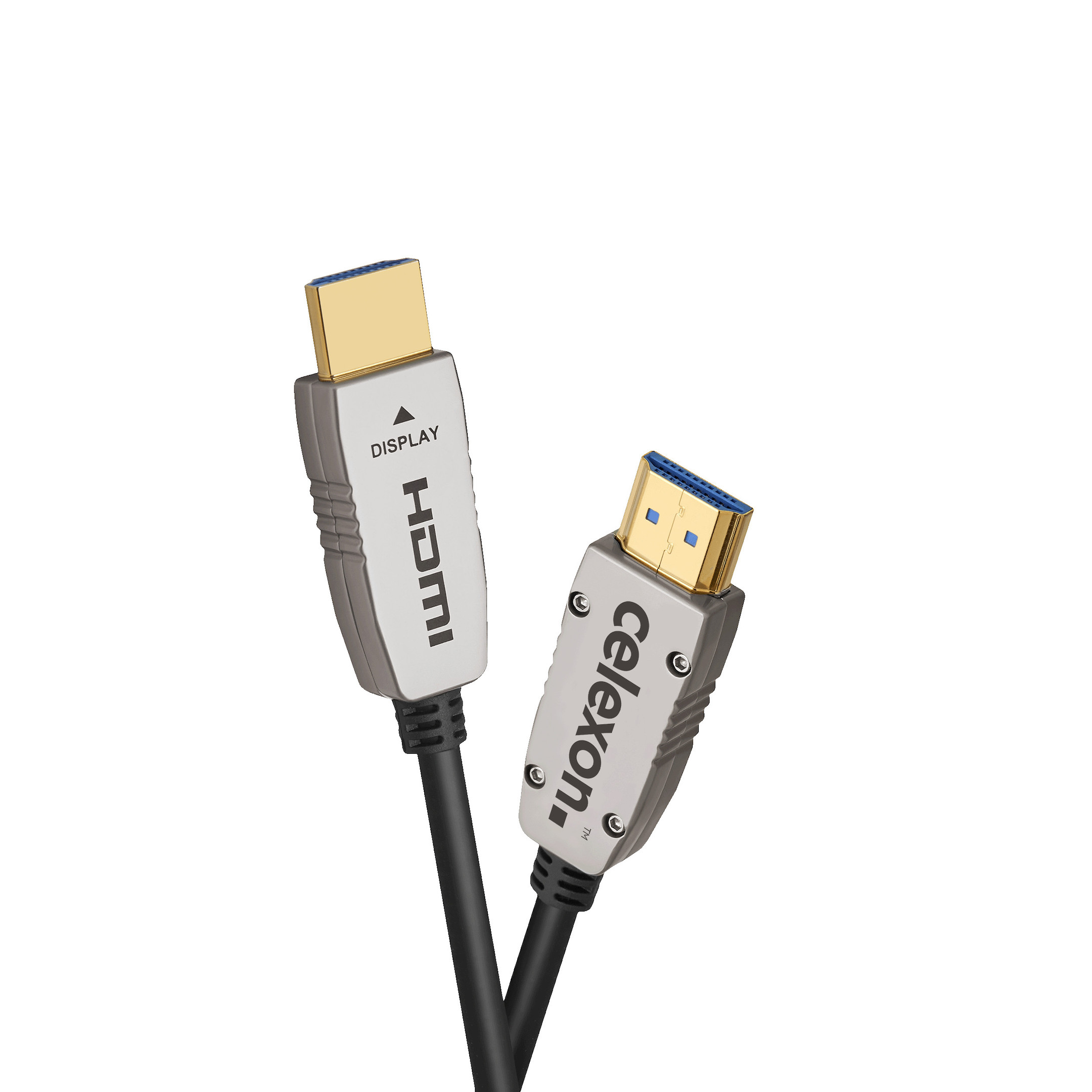



















£95.99*


Product information
The Optical Fibre HDMI 2.0b active cables from celexon are the solution when 100% reliable data transmission over long signal paths is required.
The integrated signal converter in the transmitter of the cable transforms the electrical HDMI signal from the source into light pulses, which are transmitted to the receiver (connector) via the fibre optic cable and converted back into an electrical HDMI signal. Thanks to the optical transmission, external interference from radio radiation or magnetic fields is excluded. The cable has the same dimensions as a classic HDMI cable and is no larger on the connector side. The converter technology is fully integrated into the connectors.
The Optical Fibre HDMI 2.0b active cables from celexon support image resolutions up to 4K UHD (4 times the resolution of Full HD) with a refresh rate of 60Hz and 4:4:4 colour subsampling at 8bit as well as a bandwidth of up to 18.2 Gbps and a maximum possible colour depth of 16bit.
The 24k gold-plated HDMI plug prevents oxidation of the plug contacts and therefore always ensures optimum transmission properties. In addition, our high quality standards ensure that the contacts fit precisely and prevent wobbling or slipping out of the HDMI interface.
In brief:
- Length: 20m
- Colour: black
- Optical HDMI signal transmission for long signal paths
- Supports HDMI version 2.0b with 18.2Gbps & HDCP version 2.2
- Signal transmission absolutely insensitive to external interference
- 4K60HZ 4:2:0 for 8bit/10bit/12bit/16bit; 4K60HZ 4:2:2 for 12bit; 4K60HZ 4:4:4 for 8bit
- HFR 3D compatible up to 1080p
- supports High Dynamic Range (HDR)
- supports HLG (Hybrid Log Gamma)
- up to 32 audio channels for multi-dimensional, immersive audio experience
- up to 1536 kHz audio sampling for highest sound quality
- supports "wide angle theatrical 21:9 video" format
- supports CEC commands
- incl. Audio Return Channel (ARC)
- high-quality gold-plated plug (corrosion protection and best cable properties)
- extremely flexible (over 90° with 30mm bending radius) and easy to install
- no additional power supply required
- EVERY CABLE is tested with ATC-certified test equipment
Our HDMI cables support the playback of High Dynamic Range (HDR) images with high brightness differences. These appear significantly richer in contrast and detail and reproduce your images in breathtaking quality with compatible end devices
Independent endurance tests with full 4K resolution at 60Hz confirm that our HDMI cables always transmit image and sound without interference, even during prolonged use. Each cable is tested for correct function using officially ATC-certified test equipment before packaging,
so you are ideally equipped for the future of high-resolution image display.
Technical data
| Name | celexon UHD Optical Fibre HDMI 2.0b Active Cable - 20m, black |
|---|---|
| Article number | 1000004843 |
| GTIN/EAN | 4260094739613 |
| Manufacturer SKU | 1000004843 |
| Model name | 1000004843 |
| Brand | celexon |
| Product Type | HDMI cable |
| Product Series | celexon HDMI Optical 2.0 |
| Inputs | 1x HDMI |
| Outputs | 1x HDMI |
| Cable length | 20 m |
| Product depth | 2,000 cm |
| Weight | 0.45 kg |
| Colour | Black |
| Condition | New |
| Warranty | 24 Month |
| Warranty type | Bringin service Service and support information |
Product safety
| Person responsible for the EU |
|---|
| celexon Europe GmbH |
| Gutenbergstraße 2 |
| 48282 Emsdetten |
| Germany |
| info@celexon.de |



